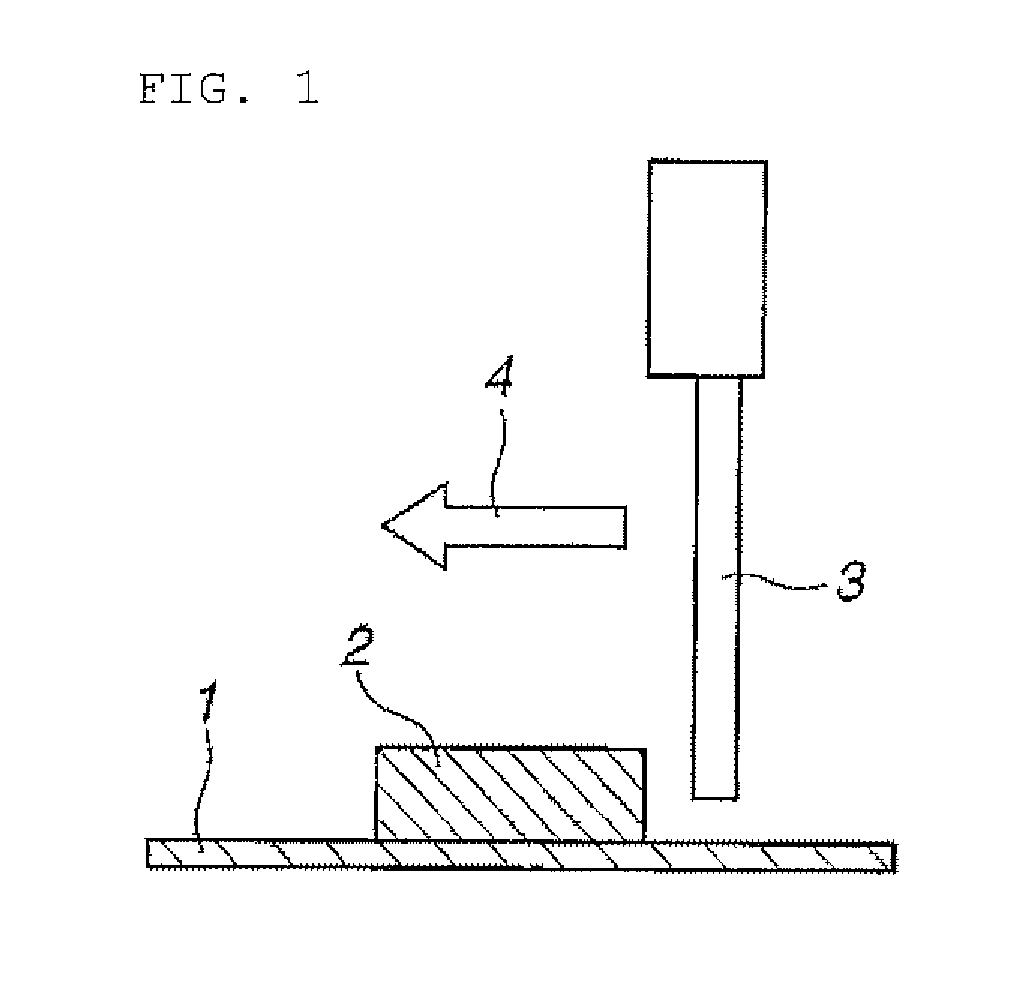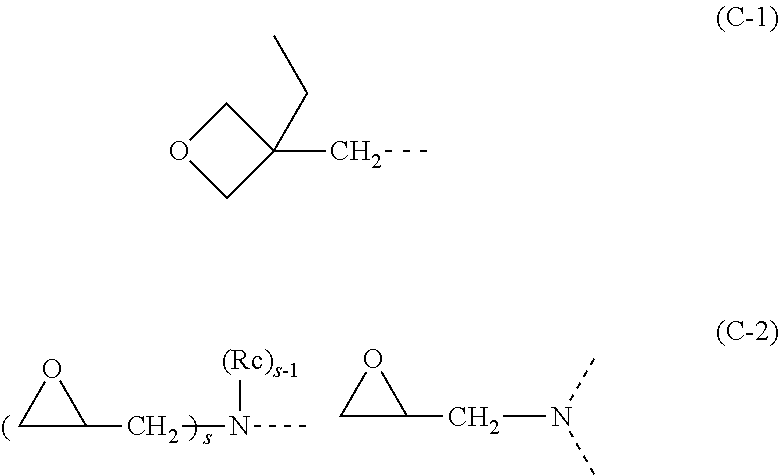Positive photosensitive resin composition, photo-curable dry film and method for producing same, layered product, patterning process, and substrate
- Summary
- Abstract
- Description
- Claims
- Application Information
AI Technical Summary
Benefits of technology
Problems solved by technology
Method used
Image
Examples
synthesis example 1
[0198]Into a three-necked 300 mL flask inside which was replaced with nitrogen were placed 50 g (28.8 mmol) of Compound 1, 13.3 g (28.8 mmol) of Compound 2, 8.6 g (57.6 mmol) of terephthalaldehydic acid, 50 g of dichloroethane, and 13 g of toluene, and the flask was then heated to 75° C. Thereafter, 3.6 g (31.2 mmol) of methanesulfonic acid was added dropwise thereinto, and the resulting mixture was further heated to 80° C., and aged for 17 hours. After cooled to room temperature, 150 g of 4-methyl-2-pentanone was added to the mixture. This mixture was transferred to a 1 L separatory funnel, and washed with 150 g of ultrapure water four times. The organic layer was then distilled off under reduced pressure, and 150 g of cyclopentanone was added to obtain Polymer compound (A-1) in the solvent mainly consisting of cyclopentanone with the solid concentration of 50 to 60% by mass.
[0199]The molecular weight of this polymer compound was measured by GPC, and consequently the weight average...
synthesis example 2
[0200]Into a three-necked 300 mL flask inside which was replaced with nitrogen were placed 50 g (28.8 mmol) of Compound 1, 13.3 g (28.8 mmol) of Compound 2, 8.6 g (57.6 mmol) of terephthalaldehydic acid, 50 g of dichloroethane, and 13 g of toluene, and the flask was then heated to 75° C. Thereafter, 3.6 g (31.2 mmol) of methanesulfonic acid was added dropwise thereinto, and the resulting mixture was further heated to 80° C., and aged for 17 hours. After cooled to 75° C. again, 0.46 g (5.8 mmol) of a 37% formaldehyde aqueous solution was added thereto, and this mixture solution was aged for 3 hours. After cooled to room temperature, 150 g of 4-methyl-2-pentanone was added to the mixture. This mixture was transferred to a 1 L separatory funnel, and washed with 150 g of ultrapure water four times. The organic layer was then distilled off under reduced pressure, and 150 g of cyclopentanone was added to obtain Polymer compound (A-2) in the solvent mainly consisting of cyclopentanone with...
synthesis example 3
[0202]The same synthesis procedure was performed as in Synthesis Example 2 except that the amount of the 37% formaldehyde aqueous solution was changed to 0.82 g (10.0 mmol), to obtain Polymer compound (A-3).
[0203]The molecular weight of this polymer compound was measured by GPC, and consequently the weight average molecular weight was 42,200 in terms of polystyrene. Further, it was confirmed by 1HNMR spectroscopic analysis that each component was introduced into the polymer. Also, it was found that in the formula (12), d=0.23, e=0, f=0.23, g=0.46, and h=0.08.
PUM
 Login to View More
Login to View More Abstract
Description
Claims
Application Information
 Login to View More
Login to View More - R&D Engineer
- R&D Manager
- IP Professional
- Industry Leading Data Capabilities
- Powerful AI technology
- Patent DNA Extraction
Browse by: Latest US Patents, China's latest patents, Technical Efficacy Thesaurus, Application Domain, Technology Topic, Popular Technical Reports.
© 2024 PatSnap. All rights reserved.Legal|Privacy policy|Modern Slavery Act Transparency Statement|Sitemap|About US| Contact US: help@patsnap.com










